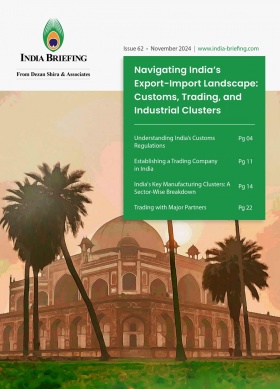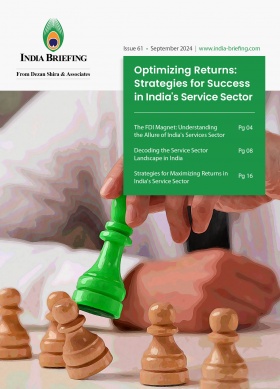India Revises Customs Tariff Structure Under Union Budget 2025-26
The Union Budget 2025-26 introduces key reforms to streamline India’s customs tariff structure and correct duty inversion. These measures aim to strengthen domestic manufacturing, boost exports, facilitate trade, and provide economic relief.
Under India’s Union Budget 2025-26, announced on February 1, 2025, the central government proposes eliminating seven additional customs tariff rates for industrial goods, following the removal of seven tariffs in 2023-24 (announced in the previous budget speech on July 23, 2024). This reduces the total number of tariff slabs to eight, including a zero rate.
The central government also recommends capping levies at one cess or surcharge per item, exempting the social welfare surcharge on 82 tariff lines subject to a cess.
Exemptions on life-saving drugs
The Union Budget 2025-26 expands the list of medicines exempt from Basic Customs Duty (BCD), adding 36 life-saving drugs to the fully exempt category and reducing customs duty to 5 percent for six additional drugs.
Exempted drugs include Tepotinib (non-small cell lung cancer), Avelumab (monoclonal antibody for certain cancers), Asciminib (white blood cell cancer), Alglucosidase Alfa (Pompe disease), and Mepolizumab (severe asthma). Bulk drugs used in their production will also benefit, lowering costs for domestic pharmaceutical companies and improving affordability for patients.
The budget further extends full customs duty exemptions to 37 additional medicines provided under Patient Assistance Programs and incorporates 13 newly recognized programs, increasing access to essential treatments for financially vulnerable patients.
Patient Assistance Programs (PAPs), supported by the central government, provide free or subsidized medicines to patients who cannot afford costly treatments. Typically run by pharmaceutical companies, non-profits, or healthcare providers, these programs benefit individuals with chronic, life-threatening, or rare diseases where medication costs are high.
PAPs are commonly used for cancer treatments, rare disease medications, and life-saving drugs for conditions such as diabetes, cardiovascular diseases, and autoimmune disorders.
Cancer treatment in India presents significant financial challenges, exacerbated by high import duties on medications. According to the National Centre for Disease Control (NCDC), approximately 1.46 million new cancer cases were recorded in 2022. The exemption on life-saving drugs is expected to provide crucial relief to affected families.
Building on previous reductions in customs duties for critical cancer medications, in 2024, India eliminated the 10 percent customs duty on cancer drugs, such as Trastuzumab Deruxtecan, Osimertinib, and Durvalumab.
Despite this progress, healthcare experts continue to advocate additional tax relief, particularly on radiotherapy machines, which still attract high import duties despite being vital for cancer treatment.
Also Read: India’s Medical Devices Industry: Investor Outlook
Expanding cancer care infrastructure in India
The Union Budget 2025-26 includes plans to strengthen cancer care by establishing 200 new daycare cancer centers in district hospitals nationwide. These centers will provide essential treatments such as chemotherapy and immunotherapy, reducing the need for patients to travel to major cities for specialized care.
To address the shortage of healthcare professionals, the government aims to add 10,000 new medical seats next year and 75,000 over the next five years. Additionally, efforts to enhance medical tourism through improved infrastructure and specialized treatment facilities will position India as a global hub for advanced medical care.
Customs duty exemptions to boost domestic manufacturing
The Union Budget 2025-26 introduces multiple customs duty exemptions to support domestic manufacturing:
- EV and mobile phone battery production: 35 capital goods for EV battery production and 28 for mobile phone battery manufacturing are now exempt, promoting lithium-ion battery production.
- Critical minerals: Full BCD exemptions apply to cobalt powder, lithium-ion battery waste, lead, zinc, and 12 more critical minerals, ensuring a stable raw material supply and supporting job creation. This follows the exemption of 25 critical minerals in the 2024-25 budget.
- Textile sector: Two shuttle-less looms have been added to the fully exempted textile machinery list. The BCD on knitted fabrics has been revised to 20 percent or INR 115 per kg (whichever is higher) to boost technical textiles, including agro-textiles, medical textiles, and geo-textiles.
- Leather: The leather industry is also set to receive benefits as India removes the 20 percent export duty on crust leather while fully exempting BCD on wet blue leather, facilitating imports for domestic processing and job creation.
- Electronics & displays: The BCD on Interactive Flat Panel Displays (IFPDs) has increased from 10 percent to 20 percent, while Open Cell and related components now have a 5 percent duty to correct the inverted duty structure and encourage domestic manufacturing under ‘Make in India’.
- Shipbuilding & shipbreaking: The BCD exemption on raw materials, components, consumables, and parts for shipbuilding has been extended for 10 years to reduce gestation periods. Similar measures support the shipbreaking industry to enhance competitiveness.
- Telecom equipment: The BCD on carrier-grade Ethernet switches has been reduced from 20 percent to 10 percent, aligning it with non-carrier-grade switches to prevent classification disputes.
Other customs duty and export adjustments
The Union Budget 2025-26 introduces several measures to benefit key sectors:
- Handicrafts: The allowable export period for handicrafts has been extended from 6 months to 1 year, with a further 3-month extension if needed. Nine additional handicraft items are now eligible for duty-free inputs.
- Seafood: The BCD on frozen fish paste has been reduced from 30 percent to 5 percent, while the duty on fish hydrolysate (used in fish and shrimp feeds) has been cut from 15 percent to 5 percent, boosting the competitiveness of the domestic seafood sector.
- MRO services: The export period for foreign-origin goods imported for repairs has been extended from 6 months to 1 year, with an additional 1-year extension. This benefit now also applies to railway goods to support maintenance, repair, and overhaul (MRO) services for aircraft and ships.
Key regulatory reforms in customs procedures
A major regulatory reform includes a 2-year time limit, extendable by 1 year, for finalizing Provisional Assessments under the Customs Act, 1962. This aims to reduce uncertainty and lower operational costs for businesses.
A new provision allows importers and exporters to voluntarily disclose material facts and pay duty with interest, without facing penalties—unless an audit or investigation is already underway.
The time frame for utilizing imported inputs has been extended from 6 months to 1 year, offering industries more flexibility in managing supply chain uncertainties. Additionally, compliance requirements have been streamlined, with importers now required to file quarterly statements instead of monthly.
Understanding the customs duty structure in India
A tariff is a tax imposed by the government on goods imported or exported to regulate trade. Customs duty is a specific type of tariff applied to goods crossing international borders. In India, customs duties are levied by the Central Board of Indirect Taxes and Customs (CBIC) under the Ministry of Finance to regulate trade, protect domestic industries, and generate government revenue. Customs duties apply to both imports (import duty) and exports (export duty).
India’s customs duty structure includes several types:
- Basic customs duty (BCD): A standard tax on imported goods.
- Countervailing duty (CVD): Imposed to offset subsidies granted to producers in exporting countries.
- Anti-dumping duty: Applied to prevent unfair trade practices when foreign manufacturers sell goods below market value.
- Social welfare surcharge: An additional duty on customs duties to fund social welfare initiatives.
About Us
India Briefing is one of five regional publications under the Asia Briefing brand. It is supported by Dezan Shira & Associates, a pan-Asia, multi-disciplinary professional services firm that assists foreign investors throughout Asia, including through offices in Delhi, Mumbai, and Bengaluru in India. Readers may write to india@dezshira.com for support on doing business in India. For a complimentary subscription to India Briefing’s content products, please click here.
Dezan Shira & Associates also maintains offices or has alliance partners assisting foreign investors in China, Hong Kong SAR, Dubai (UAE), Indonesia, Singapore, Vietnam, Philippines, Malaysia, Thailand, Bangladesh, Italy, Germany, the United States, and Australia.
- Previous Article Personal Income Tax Changes in India Under the New Regime for FY 2025-26
- Next Article Employee Retention Strategy in India: Corporate Sector Explores New Retirement Options in 2025








